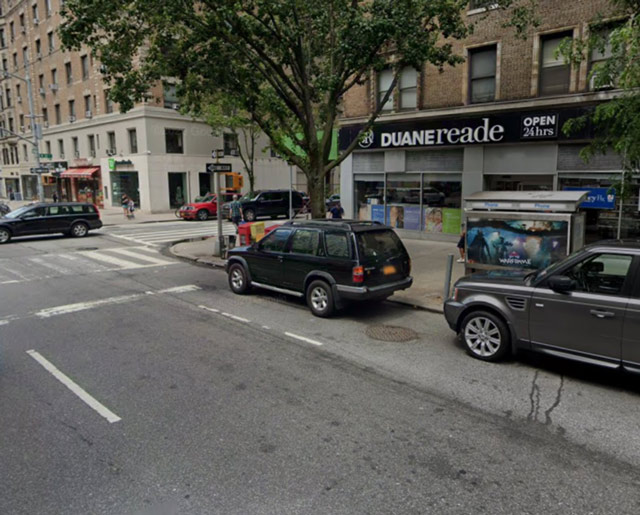A Coney Island Wheel of Wonder
 |
| Bowery Street at West 12th Street, Coney Island, Brooklyn, New York, in 1993 (Gregoire Alessandrini). |
Some scenes in New York just don't change much over time. When you do something right the first time, you tend to keep it just like it is. While most of the posts on this blog show places in Manhattan, that's only because it is the most recognizable part of New York City to a wide audience. New York City is much more than Manhattan, of course, so occasionally we venture outside the confines of that island to look at other neighborhoods. In this post, we look at a simple street scene in Brooklyn, specifically, at Coney Island.
The photo above was taken at the corner of Bowery Street and West 12th Street. The center point of the photo is the Wonder Wheel. This is located between West 12th Street and the famous Coney Island boardwalk, actually called the Riegelmann Boardwalk.
 |
| The Wonder Wheel in 1941, taken from the same location as the photo at the top of this page (Alfred Palmer, Prints and Photographs Division, Library of Congress). |
The Wonder Wheel is an institution in Coney Island. It was novel in concept, taking after the famous G.W.G. Ferris' giant wheel with some modifications, and designed by Charles Hermann. The new ride was constructed in 1920 by Hermann, William J. Ward, and Herman Garms along with the famous Coney Island Tilyou family, who owned Luna Park. The Wonder Wheel's original name was "Dip the Dip," though "Wonder Wheel" was always a term associated with it.
 |
| The original 1920 patent for the Wonder Wheel. |
The Wonder Wheel survived the decline of Coney Island as a resort after the 1940s. It changed hands in 1983 when the Vourderis family took over. The portion of West 12th Street adjacent to the Wonder Wheel is now named Denos D. Vourderis Place after the family patriarch. He renamed the area around his new property Deno’s Wonder Wheel Park.
 |
| Another photo of the Wonder Wheel from the same location in the 1940s (Image courtesy of the Coney Island History Project). |
While it looks like many other Ferris wheels, the Wonder Wheel is actually a bit different than many of them. It is an "eccentric" wheel. This means that riders can choose cars that drop away from the wheel at various times, giving the impression of free-fall. Naturally, that is exactly what some savvy fellows were looking for on dates as their companions squeal out in sudden terror and reached out to them.
 |
| The Wonder Wheel at its opening in 1920 (photo courtesy of Deno's Wonder Wheel Amusement Park). |
 |
| Bowery Street at West 12th Street, October 2019 (Google Street View). |
 |
| Bowery Street sign at West 12th Street, Coney Island in October 2019 (Google Street View). |
One interesting thing is that the "Bowery Street" sign is badly faded - it may actually be the same one seen in the 1993 photo. Or even earlier. It's curiously befitting a scene that extends virtually unchanged back well before almost all of us were born.
I hope you enjoyed this brief trip down memory lane in an obscure corner of Brooklyn. The spirit of Coney Island lives on even as the community has changed and grown. Please visit some of the other entries in this series!









